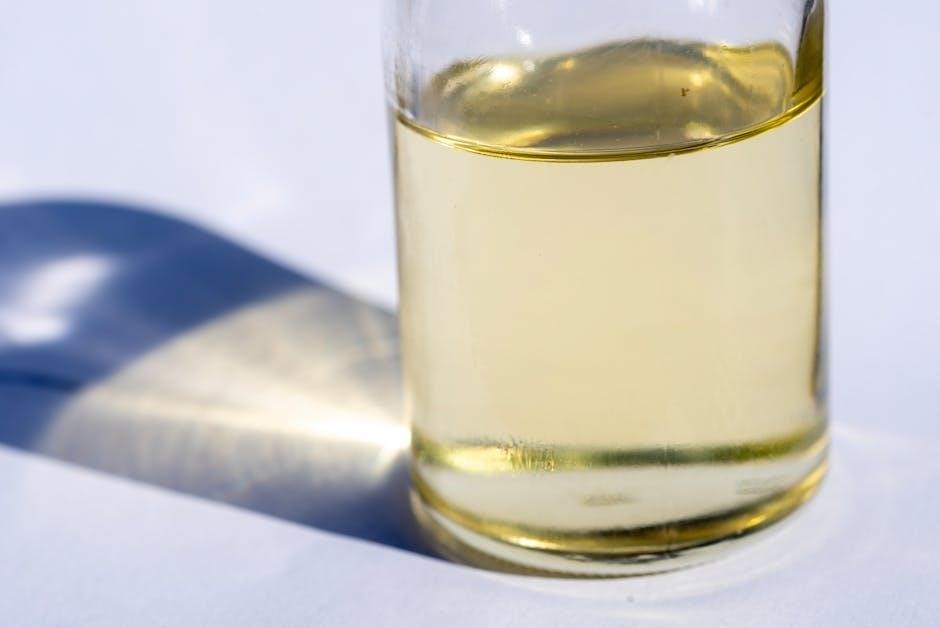Crystal growing kits offer a fascinating hands-on science experience, allowing users to grow colorful crystals at home․ These kits are perfect for both children and adults, providing an educational and fun way to learn about geology and chemistry․ With step-by-step instructions, they make complex scientific concepts accessible, encouraging curiosity and experimentation․ The kits include all necessary materials, from chemicals to seed rocks, making it easy to start growing crystals right away․ They are ideal for STEM learning, fostering patience and observation skills while creating stunning crystal formations․
What is a Crystal Growing Kit?
A crystal growing kit is an educational science set designed to help users grow their own crystals at home․ These kits typically include chemicals, seed rocks, dye, and tools like a magnifying glass for observation․ They provide a hands-on learning experience, teaching concepts like crystal formation and geology․ Suitable for children and adults, the kits often come with detailed instructions, safety equipment, and materials to create colorful, unique crystals․ They are perfect for STEM enthusiasts, offering a fun way to explore scientific principles while creating stunning crystal formations․
Why Are Crystal Growing Kits Popular?
Crystal growing kits are popular due to their unique blend of science, creativity, and fun․ They provide an engaging STEM learning experience, making complex concepts like crystal formation accessible to all ages․ Many enjoy the rewarding process of nurturing crystals, watching them grow, and admiring the colorful results․ These kits also foster patience, curiosity, and a deeper appreciation for natural processes․ Their versatility makes them ideal for educational settings, homeschooling, or as a hobby, appealing to both kids and adults seeking hands-on, interactive activities․
Importance of Following Instructions
Following instructions in crystal growing kits is crucial for achieving successful crystal formation․ The step-by-step guidelines ensure proper chemical mixing, safety, and optimal growing conditions․ Deviating from instructions can lead to failed experiments or unsafe situations․ By adhering to the provided protocols, users can understand the scientific principles involved, such as solubility and saturation, and develop patience and attention to detail․ This structured approach also enhances learning and the overall enjoyment of the crystal-growing process, making it both educational and rewarding․
Contents of a Typical Crystal Growing Kit
A typical crystal growing kit includes chemicals, seed rocks, safety gear, and instructions․ These components help users create a controlled environment for crystal formation and observation․
Chemicals and Powders for Crystal Formation
A typical crystal growing kit includes specific chemicals and powders designed to promote crystal growth․ These often include super-saturated solutions, food coloring for customization, and alum powder, a common crystal-forming compound․ The chemicals are pre-measured to ensure the right concentration for optimal growth․ Some kits may also include additives to enhance color or clarity․ These substances are essential for creating the perfect environment for crystals to form and develop over time․ Always handle them carefully and follow the instructions provided․
Seed Rocks and Growing Surfaces
Seed rocks are small, porous stones included in crystal growing kits to provide a surface for crystal formation․ They are typically rough-textured to give crystals a starting point․ Growing surfaces, such as strings or sticks, are also included to suspend in the solution, allowing crystals to grow evenly․ These surfaces are designed to maximize crystal formation by providing ample space for the crystals to adhere and develop․ Proper placement and preparation of these surfaces are key to successful crystal growth․
Safety Equipment and Protective Gear
Crystal growing kits often include essential safety equipment to ensure safe handling of chemicals․ Gloves protect hands from potential skin irritation, while goggles shield eyes from splashes․ A face mask may be provided to prevent inhalation of dust or fumes․ These items are crucial for maintaining safety during the crystal-growing process․ Always wear the provided protective gear when mixing chemicals or handling solutions to minimize risks and ensure a safe experience for users of all ages․
Instructions and Educational Materials
Crystal growing kits typically include detailed instructions and educational materials to guide users through the process․ These materials often feature step-by-step guides, diagrams, and scientific explanations to help learners understand crystal formation․ They may also include troubleshooting tips and fun facts about geology․ The instructions are designed to be user-friendly, making the activity accessible to both children and adults․ Educational materials enhance the learning experience, teaching fundamental concepts of chemistry and crystallography in an engaging way․
Safety Precautions and Guidelines
Always wear protective gear, handle chemicals with care, and follow instructions to avoid accidents․ Ensure a well-ventilated area and keep emergency supplies nearby for safe crystal growing․
Handling Chemicals Safely
Wear gloves and goggles when handling chemicals to prevent skin and eye irritation․ Ensure good ventilation to avoid inhaling fumes․ Use spatulas or spoons to measure powders, avoiding direct contact․ Keep chemicals away from children and pets․ Store them in sealed containers and original packaging․ Follow the instructions carefully to mix solutions correctly․ Never taste or sniff chemicals, and avoid mixing unrelated substances․ Dispose of leftovers responsibly․ Keep a first-aid kit nearby and wash hands thoroughly after handling chemicals․
Protecting Skin and Eyes
Always wear protective gloves and goggles when handling chemicals to prevent skin irritation and eye exposure․ Long sleeves and closed-toe shoes can also minimize skin contact․ Avoid rubbing your eyes or touching your face while working with chemicals․ In case of accidental contact, flush eyes with water for 15 minutes and wash skin thoroughly with soap․ Immediate action can prevent irritation or burns․ Keep protective gear clean and store it properly after use․
Emergency Procedures
In case of chemical spills, immediately evacuate the area and ventilate it․ For skin or eye contact, flush with water for 15 minutes․ If chemicals are ingested, do not induce vomiting; seek medical help․ Keep emergency contact numbers handy․ Store the first aid kit nearby․ Follow the kit’s instructions for specific incidents․ Stay calm and act quickly to prevent further harm․ Ensure all household members know these procedures․ Regularly check expiration dates of first aid supplies․
General Safety Rules for Experiments
Always wear protective gear like goggles and gloves when handling chemicals․ Ensure the workspace is clean, dry, and well-ventilated․ Keep children under adult supervision․ Avoid tasting or inhaling any substances․ Use tools provided in the kit to handle hot or sharp objects․ Never mix chemicals without instructions․ Keep the kit out of reach of pets and younger siblings․ Follow the recommended ratios for mixing solutions․ Dispose of waste properly․ Ensure all electrical appliances are kept away from water․ Maintain a safe distance from open flames or heat sources․
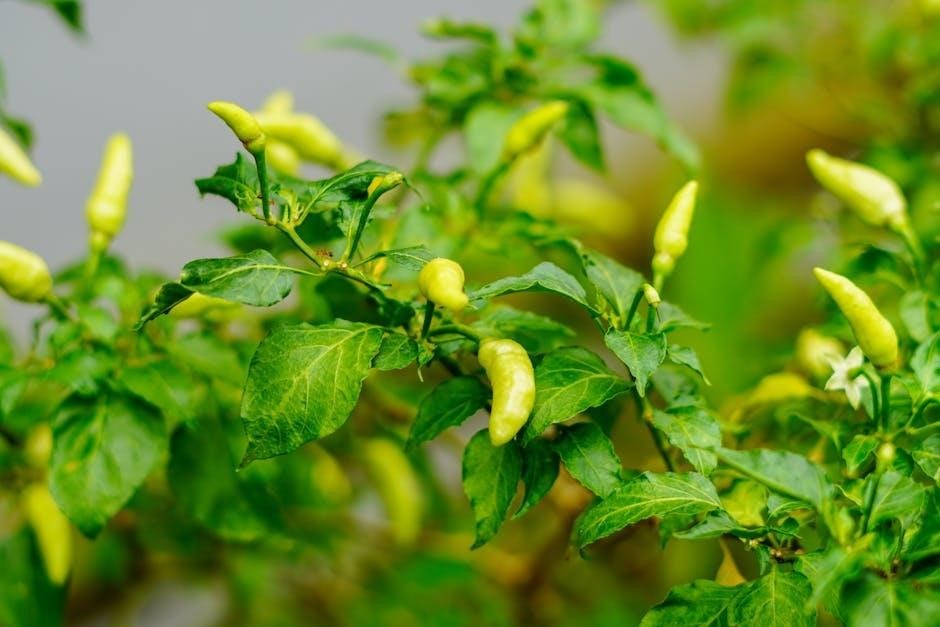
Preparing the Crystal Growing Solution
Measure water and add the crystal powder gradually, stirring until fully dissolved․ Heat the mixture if needed, then let it cool slowly to form a saturated solution․
Measuring Water and Chemicals
Accurate measurement is crucial for crystal growth․ Use a digital scale to weigh chemicals precisely, following the kit’s instructions․ Measure water separately using a measuring cup or burette to ensure the correct ratio․ Mix the solution in a clean container, adding chemicals slowly to avoid spills․ Handle chemicals with care, wearing gloves if provided․ Proper measurement ensures the solution reaches the optimal saturation level for crystal formation․ Always refer to the kit’s guidelines for specific proportions to achieve the best results․
Dissolving the Crystal Growing Powder
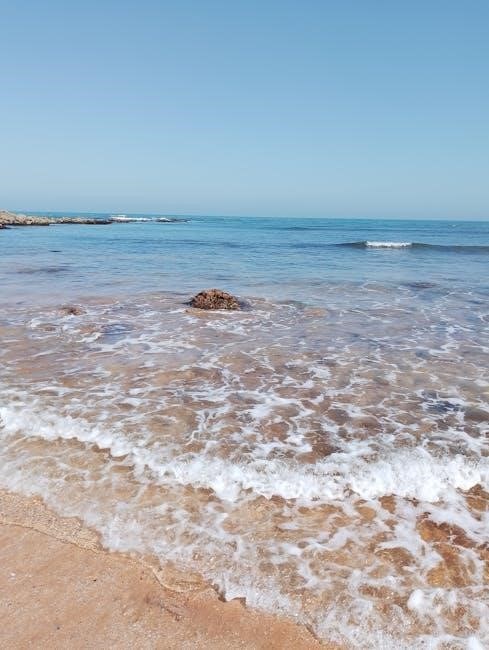
Dissolve the crystal growing powder in warm water, stirring gently with a spoon or stir stick․ Ensure the water is at the recommended temperature to avoid overheating․ Continue stirring until all particles are fully dissolved, creating a clear, saturated solution․ Avoid leaving undissolved residue, as this can interfere with crystal formation․ Once dissolved, cover the container to prevent evaporation and let it cool slightly before proceeding․ A smooth, even solution is essential for successful crystal growth․
Cooling the Solution
Allow the dissolved solution to cool slightly before pouring it into the growth container․ Place the container in a bowl of cool water or let it sit at room temperature until it reaches the desired warmth․ Avoid rapid cooling, as this can cause premature crystallization․ Cover the container to prevent dust from entering․ Once the solution has cooled sufficiently but is still warm, carefully pour it over the seed rock․ Proper cooling ensures optimal conditions for crystal growth․
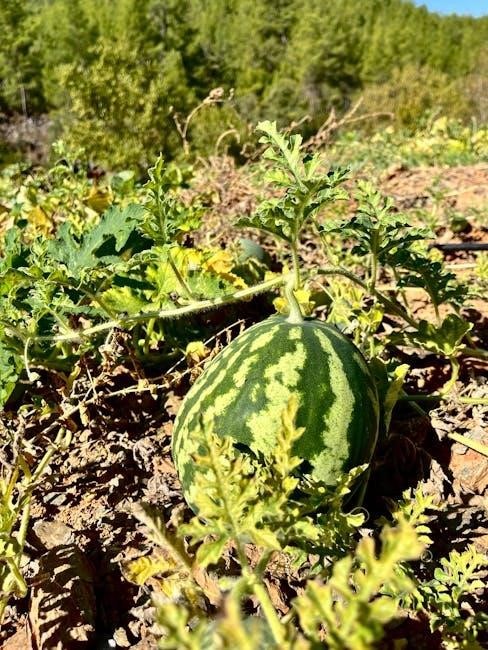
Setting Up the Growth Environment
Creating a clean, stable environment is crucial for crystal growth․ Arrange containers securely, ensure surfaces are flat, and maintain a consistent temperature to promote optimal crystal formation․
Cleaning and Preparing the Containers
Thoroughly wash the containers with mild soap and warm water to remove any impurities․ Rinse completely to ensure no residue remains, then dry with a lint-free cloth or air․ For optimal results, sterilize the containers using a diluted vinegar solution or isopropyl alcohol․ Once dry, place the containers on a flat, stable surface to prevent contamination․ Properly prepared containers create a clean environment, essential for crystal growth and minimizing impurities that could disrupt the process․
Placing the Seed Rock
The seed rock serves as the foundation for crystal growth․ Gently suspend the seed rock in the solution using the provided string or clip, ensuring it doesn’t touch the container’s bottom or sides․ Position it in the center to allow even growth․ Avoid direct sunlight or vibrations, as these can disrupt the process․ Once placed, the seed rock will attract crystal-forming molecules, initiating the growth cycle․ Proper placement ensures a stable and balanced environment for your crystals to develop․
Positioning the Growing Papers
Place the growing papers strategically in the container to maximize crystal formation․ Suspend them above the solution, ensuring they don’t touch the bottom or sides․ Angle them to allow proper solution circulation․ Secure them with clips or weights to prevent movement․ Keep them away from direct sunlight and vibrations․ Clean and prepare the papers beforehand to avoid contamination․ Proper positioning enhances nucleation and promotes balanced growth․ Adjust as needed based on the kit’s specific instructions for optimal results․
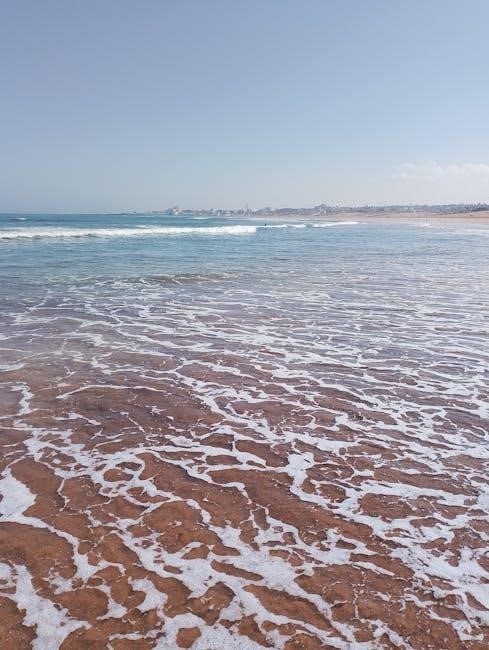
The Crystal Growth Process
Crystals form as the solution cools and saturates, allowing atoms to bond․ Nucleation begins on the seed rock, growing larger over time with proper conditions․
Observing Crystal Formation
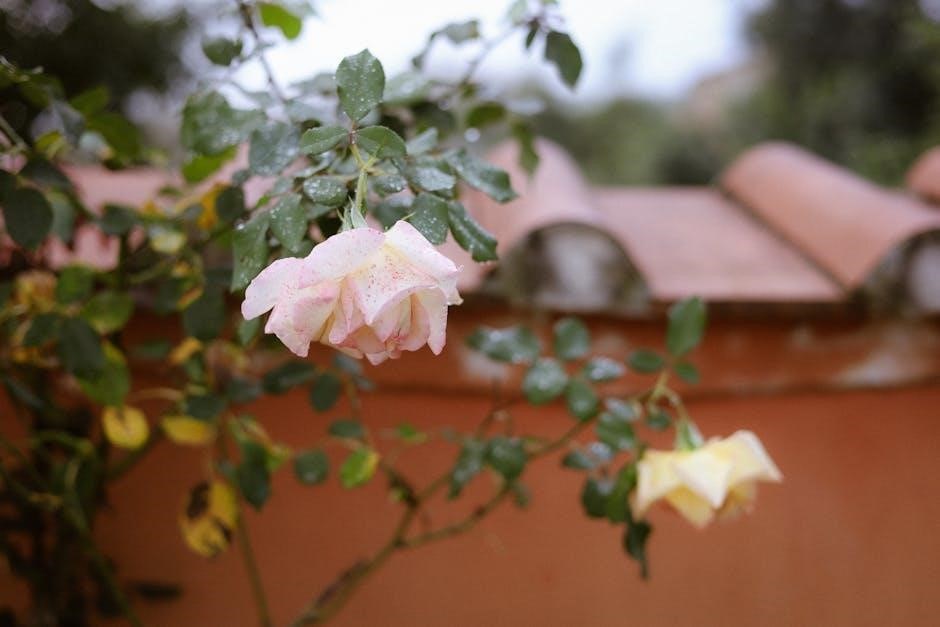
Observing crystal formation is exciting and educational․ Initially, you may notice the solution becoming cloudy as the crystal nuclei form․ Over time, tiny crystals will appear and gradually grow larger․ Daily observation helps track progress, revealing how environmental factors influence growth․ Use the magnifying glass to examine intricate details․ Avoid disturbing the setup, as vibrations or movement can disrupt the process․ Consistent conditions and patience are key to witnessing the mesmerizing transformation of a clear solution into a dazzling crystal structure․
Waiting for Crystals to Grow
Waiting for crystals to grow requires patience, as the process can take several days to weeks․ Keep the solution undisturbed to allow the crystals to form naturally․ Cover the container to prevent dust contamination and place it in a stable environment away from direct light․ Check the setup daily to monitor progress, but avoid disturbing the solution․ Consistent conditions, such as temperature and humidity, are crucial for optimal growth․ Over time, you’ll notice the crystals expanding and refining, rewarding your patience with a beautifully formed structure․
Understanding the Growth Timeline
Understanding the growth timeline helps set realistic expectations․ Initially, the solution appears clear, but within hours, seeds or nuclei may form․ Crystals typically start growing within 2-7 days, depending on factors like temperature and concentration․ Rapid growth occurs in the first week, slowing as the solution saturates․ Full development can take 1-4 weeks․ Tracking changes daily aids in recognizing when the process is complete, ensuring optimal results and preventing overgrowth․ Patience is key as the timeline varies with each kit and environmental conditions․ Growth slows once equilibrium is reached․
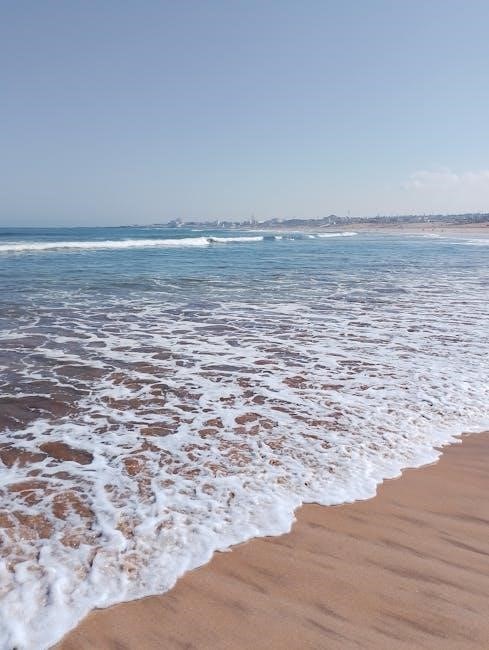
Tips for Successful Crystal Growth
Maintain stable temperatures, avoid contamination, and ensure proper saturation of the solution․ Use distilled water, filtered light, and minimize disturbances․ Monitor growth regularly but patiently․
Maintaining the Right Conditions
Maintain a stable environment for crystal growth by controlling temperature, humidity, and light exposure․ Ensure the solution cools slowly to promote nucleation․ Avoid vibrations and drafts, as they can disrupt crystal formation․ Place the setup in a quiet, undisturbed area, such as a cupboard or shelf․ Monitor ambient temperature to keep it consistent, ideally between 65-75°F (18-24°C)․ Avoid direct sunlight, as it may cause overheating․ Check the solution regularly to ensure proper saturation levels and maintain the seed crystal’s suspension․ These conditions are crucial for optimal crystal growth and clarity․
Avoiding Contamination
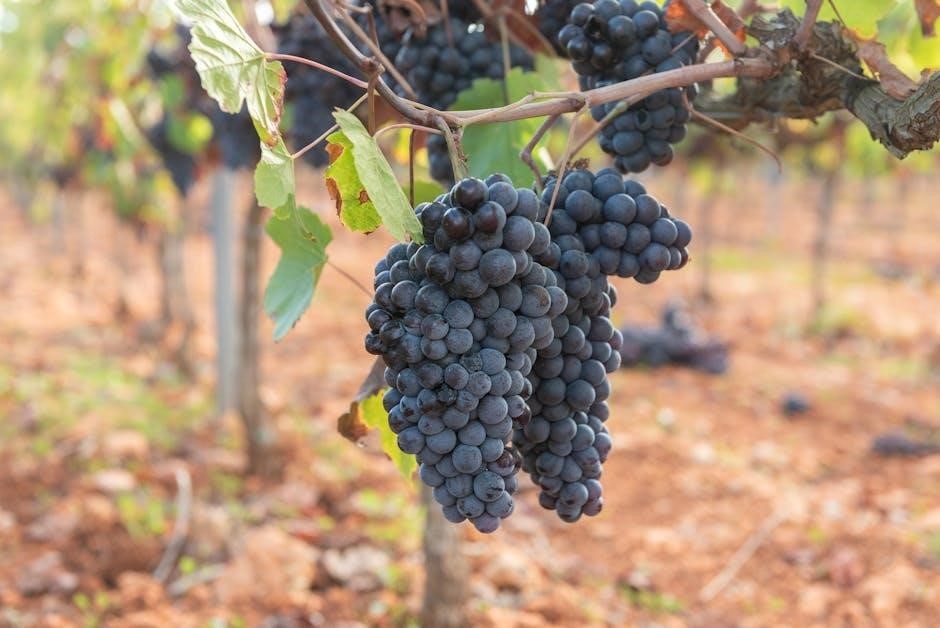
To prevent contamination, ensure all tools and surfaces are thoroughly cleaned with soap and water before use․ Wear gloves to avoid transferring oils or dirt from your skin to the solution or seed crystal․ Use a clean, sterilized utensil to handle the seed rock․ Avoid touching the crystal-growing solution or allowing dust to settle on it․ Keep the growing area clean and free from airborne particles․ Contamination can hinder crystal growth or introduce impurities, so maintaining a sterile environment is essential for successful results․
Patient Observation
Patient observation is crucial for successful crystal growth․ Crystals form gradually, so avoid disturbing the setup or touching the seed rock․ Observe the solution regularly but gently, using the magnifying glass provided to examine details without interference․ Avoid frequent checks, as unnecessary movement can disrupt the process․ Over time, you’ll notice tiny crystal formations expanding into larger structures․ Patience allows the natural chemical process to unfold, ensuring optimal growth․ Observation also helps in identifying potential issues early, fostering a deeper understanding of crystal formation dynamics and the importance of undisturbed conditions․
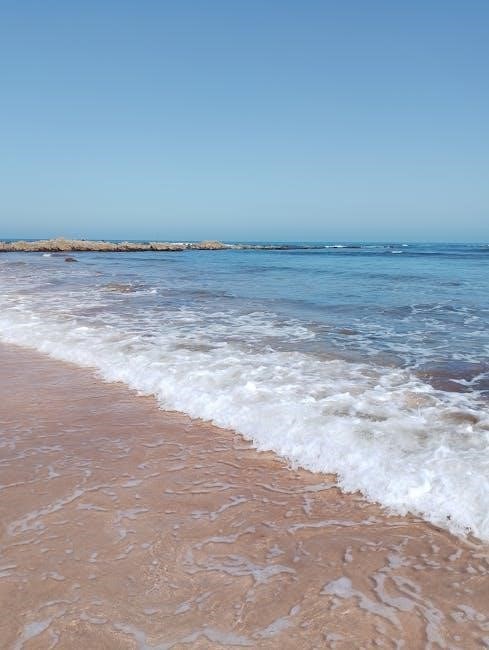
Troubleshooting Common Issues
Identify and resolve issues like uneven crystal growth or no crystal formation․ Check for improper mixing, impurities, or incorrect temperatures․ Adjust the solution carefully to restore balance․
Why Crystals Might Not Form
Crystals may fail to form due to improper solution preparation, such as inaccurate measurements or incomplete dissolution of the powder;
Incorrect temperatures or contamination can disrupt the crystallization process․
Impurities in the solution or on the seed rock can also hinder crystal growth․
Ensuring a clean environment and precise adherence to instructions is crucial for successful crystal formation․
Dealing with Imperfections
Imperfections in crystal growth can occur due to uneven surfaces, air bubbles, or impurities in the solution․
Gently clean the crystal with distilled water and a soft brush to remove loose particles․
Minor imperfections often fade as the crystal continues to grow․
If the issue persists, consider dissolving the crystal and restarting the process with a fresh solution․
Patience and careful observation are key to achieving a flawless crystal structure over time․
Adjusting the Solution
If the solution is too diluted, crystals may not form properly; gently heat it to reduce water content․
Conversely, if the solution is too saturated, add a small amount of warm water to achieve the ideal concentration․
Stir thoroughly and allow the solution to cool before resuming the growth process․
Regularly check the solution’s clarity and consistency to ensure optimal crystal formation․
Avoid over-adjusting, as this can introduce impurities or disrupt the crystal growth environment․
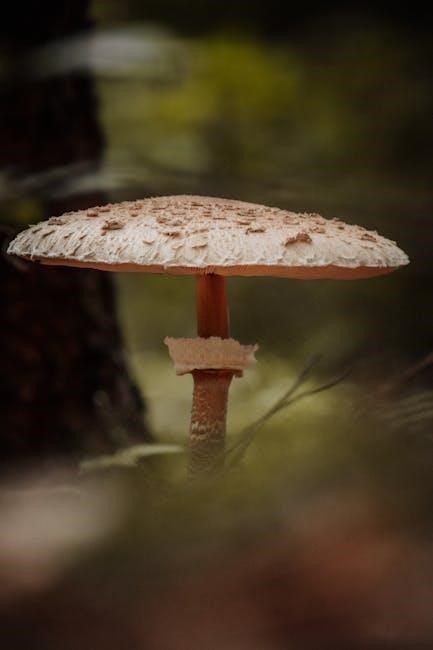
Displaying Your Crystals
Carefully clean crystals with a soft brush to remove residue․
Use a glass case or acrylic container for dust protection․
Place them in a dry, cool area to prevent damage․
Avoid direct sunlight to maintain color and clarity․
Handle gently to preserve their delicate structures․
Using the Magnifying Glass
To examine your crystals in detail, use the magnifying glass provided․
Hold it steady, adjusting the distance for clear focus․
Observe the crystal’s facets, inclusions, and growth patterns․
Examine under good lighting to enhance clarity․
This tool helps identify unique formations and imperfections․
It’s a great way to appreciate the crystal’s intricate beauty․
Share observations with others to discuss growth patterns․
This step adds an educational dimension to your project․
Storing the Crystals
To preserve your crystals, store them in a cool, dry place․
Use an airtight container to protect against moisture and dust․
Place each crystal separately to avoid scratching or damage․
Avoid direct sunlight, as it may cause discoloration․
Label the container with the crystal type or growth date․
Clean the crystals gently with soft materials before storage․
Handle them carefully to prevent breakage or chipping․
Store the crystals away from children to ensure safety․
Proper storage maintains their clarity and structural integrity․
Sharing Your Results
Share your crystal-growing achievements with others by documenting your process․
Take photos or videos to showcase your crystals’ beauty and growth journey․
Include details like the crystal type, growth time, and any challenges faced․
Post your results on social media platforms like Instagram or Facebook․
Use hashtags to connect with crystal-growing enthusiasts worldwide․
Join online communities or forums to share tips and learn from others․
Display your crystals at school fairs, science exhibitions, or local events․
Encourage others by sharing your experience and inspiring them to try․
This fosters a sense of community and mutual learning among growers․
